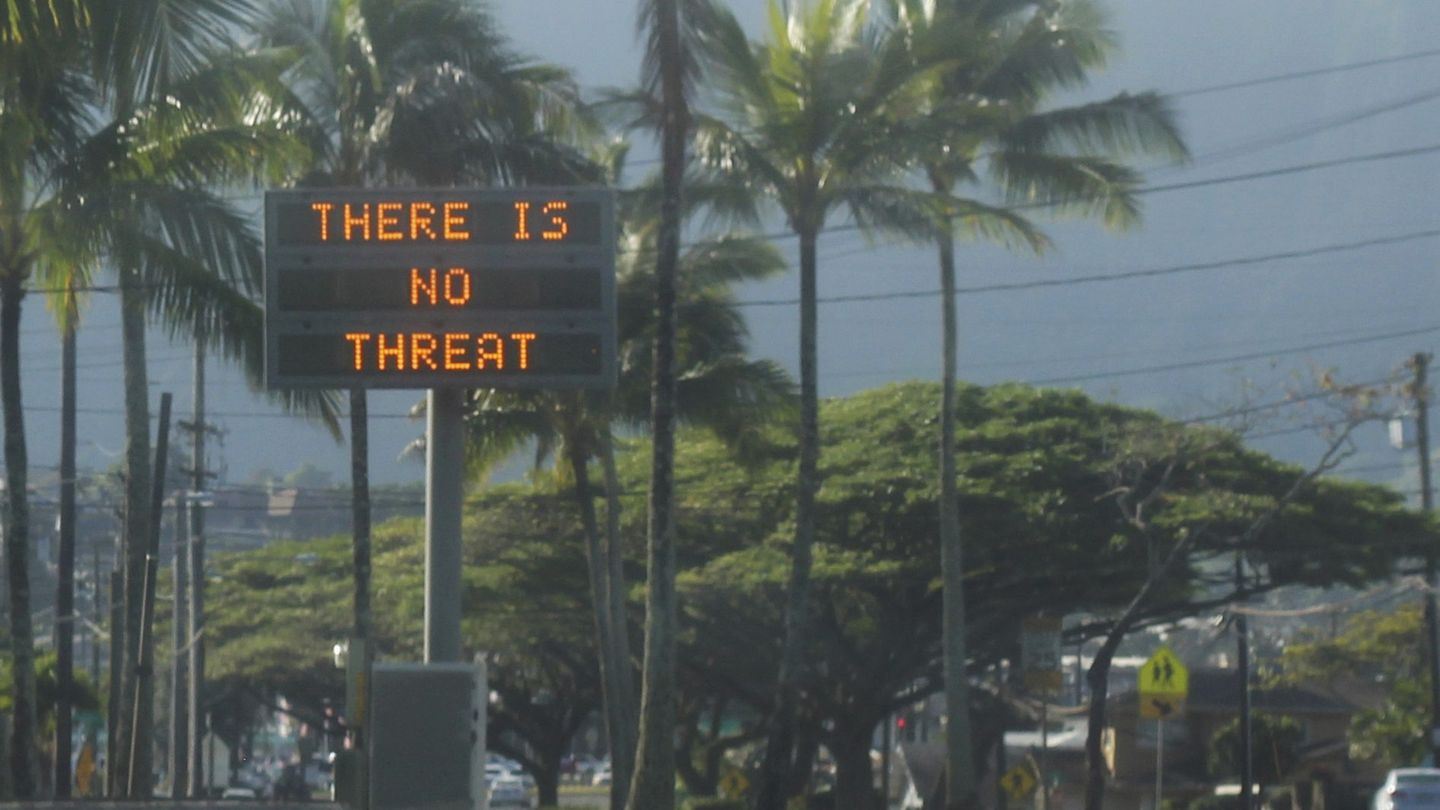

Why the false Hawaii alert could’ve been a world and political disaster
Harrowing and disturbing, this is what might have happened…
Words: Josh Lee
By now, you’ve probably read about the erroneous ICBM alert that was sent out in Hawaii just under a fortnight ago. There’s been scrutiny over how the emergency alert system works and opinions have been made clear on why rising international tensions and the perceived flight times of missiles might have lead to accidental nuclear war. Here, we take a look at what could’ve happened…
In between the 38 minutes
“BALLISTIC MISSILE THREAT INBOUND TO HAWAII. SEEK IMMEDIATE SHELTER. THIS IS NOT A DRILL,’ read the emergency system alert that was to sent smartphones statewide.
Approximately 38 minutes later, authorities said the warning was an error, with Hawaii governor, David Ige, stating: “It was a mistake made during a standard procedure at the change over of a shift, and an employee pushed the wrong button.”
Yet, even though the alerts were false, had a decision been made between the time of the first and second message, the consequences would’ve been dire.
Since Donald Trump’s arrival at the Oval Office, tensions have risen between his administration and North Korea, with fears over the Pyongyang regime’s ability to reach US soil with nuclear-armed missiles. The current president has even gone to the lengths of sending a provocative tweet to North Korea leader Kim Jong-un, whom he has previously referred to as “little rocket man”, saying the “nuclear button” in Washington is “much bigger and more powerful” than Kim’s, before adding “and my button works!”.
Hawaii’s false alert only serves as the latest reminder of the nuclear threat posed to the US amidst the war of words between the two leaders. In the possible scenario in which Trump had been convinced that the missile attack was a nuclear strike, a decision on a counter-strike would be made by him, and him alone. The order to strike (made within 5 to 10 minutes) would then be relayed to officials in charge of the US’ intercontinental ballistic missiles (ICMBs), heavy bombers or nuclear submarines.
And, if Trump had decided to launch them, and if the warning was a false alert (which could’ve been caused by numerous factors, including a deliberate act on the part of an operator who was mentally disturbed or malevolent, a malfunctioning machine or hacking from a foreign government) there would’ve been no way to call the missiles back or have them aborted mid-flight. Had this occurred, the current president – as a result of technological malfunctioning or human error (or a combination of both) – could’ve accidentally triggered World War III.
But this is far-fetched… right?
Such a scenario may seem implausible for some, however for those that lived during the height of the Cold War years, this is just another event that can be added to a list of nuclear-nearlys. For decades, Cold War policymakers were fretful over the possibility that a false report of flying missiles would provoke a leader to fire actual nuclear heads in retaliation. One of the best examples of this almost happening came in 1983 when a Korean airliner, bound from Anchorage to Seoul, had strayed into Soviet airspace. After having tried to established contact with the aircraft, the Soviet Air Force mistook it for an intruding US spy plane, fired warning shots and, when no response came, hit it with air-to-air missiles that killed 269 passengers.
Although it was quickly established that the firing had been a mistake, many in Washington concluded this an act of undeclared war and thus set in motion mutual distrust, the logic of nuclear deterrence and the idea of first-strike instability, in which firing first — even if you think you might be doing so in error — is the only way to stop your country’s destruction.
This one Cold War flashpoint was a clear example of how inaccurate information, quick response times and aggressive posturing could’ve brought two superpowers hurtling towards nuclear war – a set of circumstances that feel worryingly similar today, however this time there’s also the emergence of malicious and government-directed hackers.
What about North Korea?
Let’s also consider the possibility that more than 38 minutes had elapsed before the second message was sent out. If the US administration had been disconcerted by the event, the disarray in Pyongyang would’ve been far greater.
Had this event happened during a major international crisis, then North Korean figureheads could’ve easily perceived the Hawaiian warning as a US justification for attack, much like the Soviets had done 35 years ago. For months, Trump and his officials have been testing North Korea (in November, the president told North Korea: ‘Do not try us’), and although some consider this either an act of ego or a bluff, those in Pyongyang have little-to-no room for error; after all, it’s reported that North Korea only has a few dozen warheads, so they must be fired almost immediately to try and prevent total annihilation in the possibility of war breaking out.
Want more? Here’s why being good at business and smart at politics aren’t necessarily the same thing,


